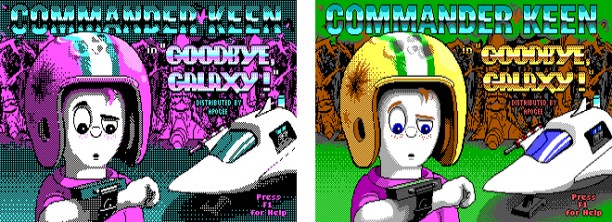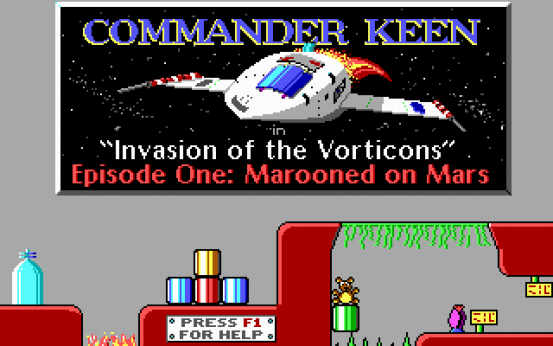
Commander Keen
In case you haven’t seen it already, Tom Hall is creating a spiritual successor to his game Commander Keen, and is asking for your help via Kickstarter. This of course seems like a prime time to dive into what made Keen not only a great platformer, but a defining game of the early 1990’s.
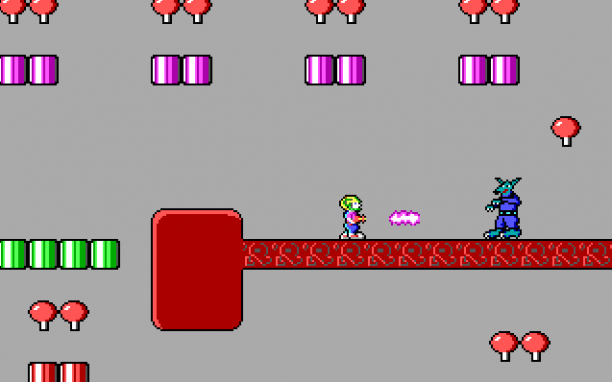
Developed by id Software, Commander Keen follows the adventures of eight year old Billy Blaze, as he travels through space as his alter-ego, Commander Keen. Using his spaceship, The Bean-with-Bacon Megarocket (made of discarded household objects), he sets off to defends the universe when his baby sitter falls asleep.
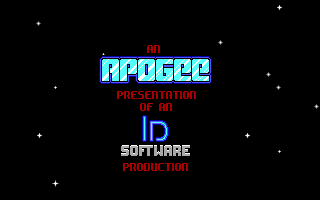 Originally started as a tech demo for John Carmack’s smooth-scrolling graphics engine, the game would evolve into a complete clone of Super Mario Bros. 3, which was then presented to Nintendo to showcase what was possible on a PC. Though Nintendo declined to enter the PC market, the demo caught the eye of Apogee founder Scott Miller, who advanced the id Software team $2000 to create Commander Keen.
Originally started as a tech demo for John Carmack’s smooth-scrolling graphics engine, the game would evolve into a complete clone of Super Mario Bros. 3, which was then presented to Nintendo to showcase what was possible on a PC. Though Nintendo declined to enter the PC market, the demo caught the eye of Apogee founder Scott Miller, who advanced the id Software team $2000 to create Commander Keen.
Broken into four episodes, Commander Keen at it’s simplest is a fantastic examples of the budding platforming genre of the early 1990’s. The game is humorous, graphically impressive, and is above all fun. But perhaps more so, the game set out to prove that the PC was a viable gaming platform. It’s writing, puzzle elements, and platforming mechanics surpassed it’s contemporaries, and launched id Software into a gaming powerhouse.
The game also managed to popularize the shareware distribution method that so defined PC gaming of the early 90’s. Games would be split into multiple episodes, with the 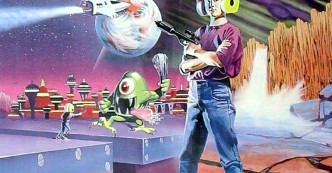 first episode being distributed for free via BBS (pre-forums). You could also, eventually, go “buy” the first episode at a local Walmart, etc. on a software disk for a small price. (I remember going into a Zellers as a kid and picking up these disk for $5 – $10) Gamers could then decide if they wanted to buy the remaining episodes to complete the story. It was a demo of a game before game demos were a concept.
first episode being distributed for free via BBS (pre-forums). You could also, eventually, go “buy” the first episode at a local Walmart, etc. on a software disk for a small price. (I remember going into a Zellers as a kid and picking up these disk for $5 – $10) Gamers could then decide if they wanted to buy the remaining episodes to complete the story. It was a demo of a game before game demos were a concept.
The game also managed to popularize EGA graphics. EGA, a step between CGA and VGA graphics, allowed the PC to display 16 simultaneous colours on screen from a palette of 64 different colours. Though this cut out anyone stuck using CGA graphics on an older machine (as John Carmack’s graphics engine required a EGA card), it allowed for a graphically impressive PC platformer, which I’ve illustrated in the comparative screenshot below.
Overall, the game is a fantastic example of the platforming genre on the personal computer, and kick started a series of seven official episodes. Without the success of Commander Keen, we wouldn’t have id Software, DOOM, or the Dopefish. You can still buy it today, as the game is conveniently available on Steam. Go pick it up, you’re looking at a great example of relatively-early PC gaming.
